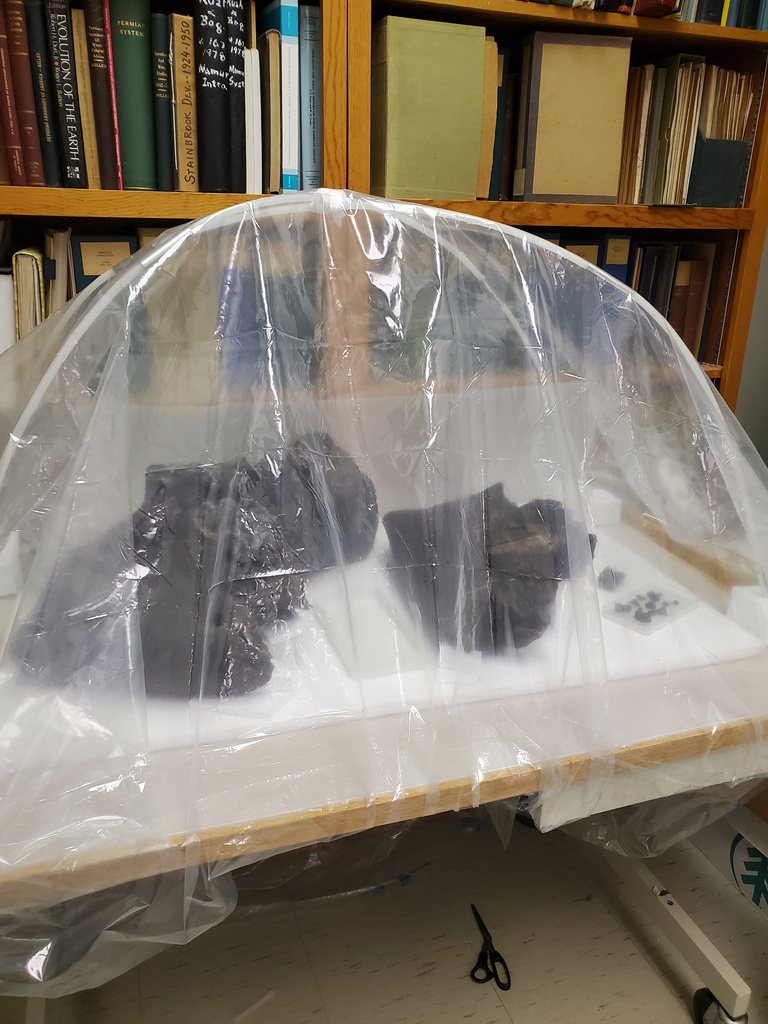08/02/2022
Today in the Repository, Tiffany Adrain and Evelyn Gonzalez are exploring new ways to preserve and protect fossil specimens!
The Repository has recently received exquisite fossil specimens from the Missouri River and has undertaken the task of preserving them in the best condition possible. The specimens were extracted from a fluvial environment and were submerged in tanks of water before being shipped to the repository. This had the benefit of gently removing any solutes from the pore spaces of the specimens, but also resulted in complete saturation of the material. Upon arrival, the specimens were enveloped completely in wet towels that were regularly changed with cleaner wet towels. The specimens were kept in wet towels to prevent any sort of drying to occur within an uncontrolled environment.
All the specimens are Quaternary subfossil bone, tusk and antler material experiencing water damage. The specimens are only partially petrified, and as such, all require sensitive and delicate care. The process of drying waterlogged specimen can typically results in specimen damage, but the goal of this project is to keep the specimens in prime condition for both research and exhibition. To do this, we are trying out a technique that was detailed in a study conducted in 2021 by Saint Mary's University and the New Brunswick Museum1. The specimens are kept in drying chambers constructed from sheets of Coroplast, Ethafoam, and polyethylene. By keeping the specimens in these drying chambers, they are allowed to dry slowly over a much longer period of time, reducing the chance of specimen damage resulting from rapid drying. Additionally, the micro-environmental conditions within the drying chamber can be more easily controlled than the environment outside of the drying chamber. Because of the chambers, conditions such as moisture and temperature can be easily monitored and controlled for most ideal specimen drying conditions. Unfortunately, no method is without its problems.
Depicted below from left to right: Completed drying chamber || Proboscidean vertebra with scale || Antler with scale

[1]: https://www.researchgate.net/publication/353140912_Conservation_and_photogrammetry_of_subfossil_Quaternary_walrus_Odobenus_rosmarus_from_the_Bay_of_Fundy_Canada